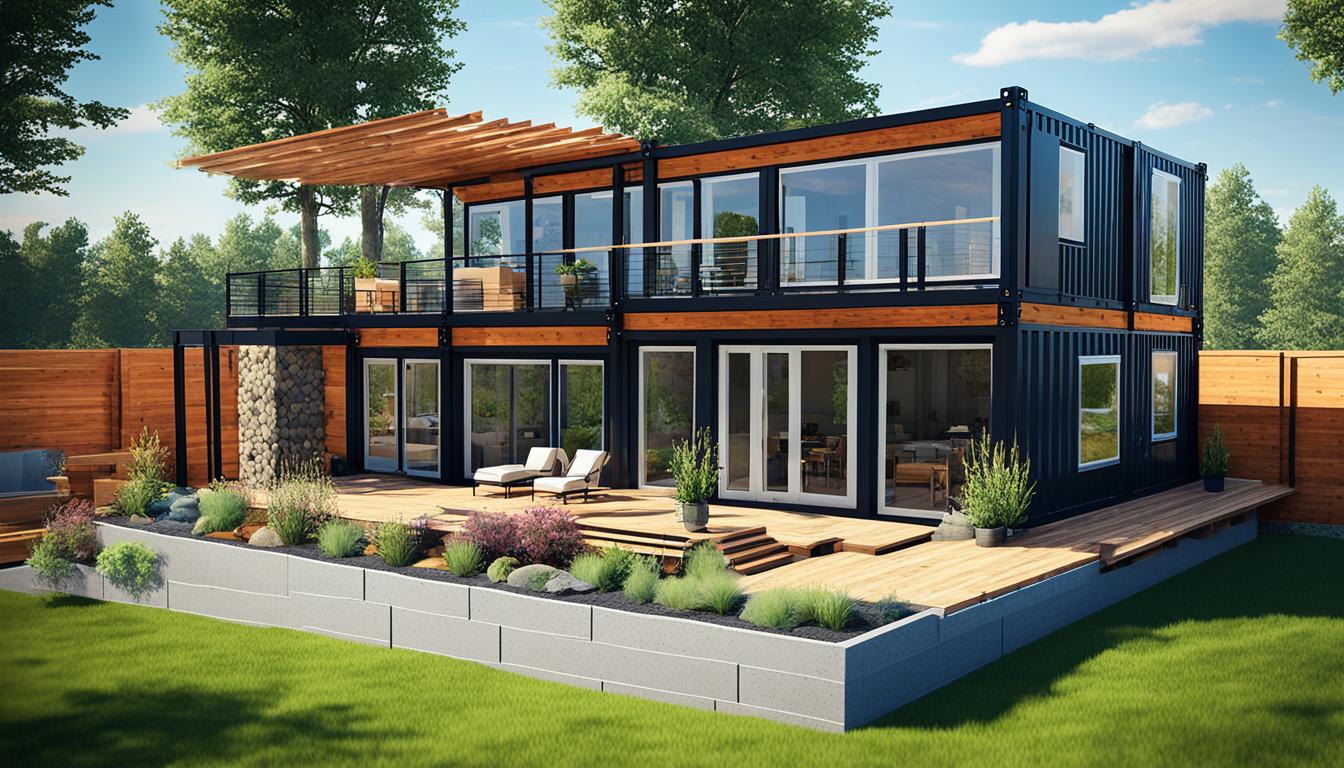Housing costs keep going up, and more people want affordable, green homes. Shipping container homes are getting more popular. They’re a great choice for building your dream home, a weekend spot, or a rental.
This guide will walk you through planning, designing, and building a container house. I’ll share tips and insights to help you every step of the way. You’ll learn why container homes are a good choice and how to make one.
Let’s start exploring how to build your dream container home. We’ll look at the benefits and possibilities of this new way of living.
Why Choose a Shipping Container Home?
The housing market is getting pricier, so people are looking for cheaper and greener options. Cost-effective container homes and affordable container residences are becoming popular. They are a unique and green way to build your dream home.
Cost-Effective and Eco-Friendly Solution
Eco-friendly container dwellings are great because they save money. A study by Allied Market Research says the global shipping container homes market will hit $73,070,500 by 2025. Building one can be faster and cheaper than traditional houses.
Shipping containers are made of Corten steel, which is strong and can handle tough weather. This means they last longer and need less fixing or replacing. Plus, they can be recycled, making them a green choice for building.
| Feature | Benefit |
|---|---|
| Cost-effectiveness | Shipping container homes can cost as low as $3,000, making them a more affordable option compared to conventional housing. |
| Eco-friendliness | Shipping containers are highly recyclable, contributing to a more sustainable building process. |
| Durability | Corten steel construction ensures the container’s resilience against harsh weather conditions, reducing maintenance needs. |
As we look for new and green ways to live, cost-effective container homes and eco-friendly container dwellings stand out. They offer a mix of being affordable, green, and modern.
Benefits of Investing in a Container House Build
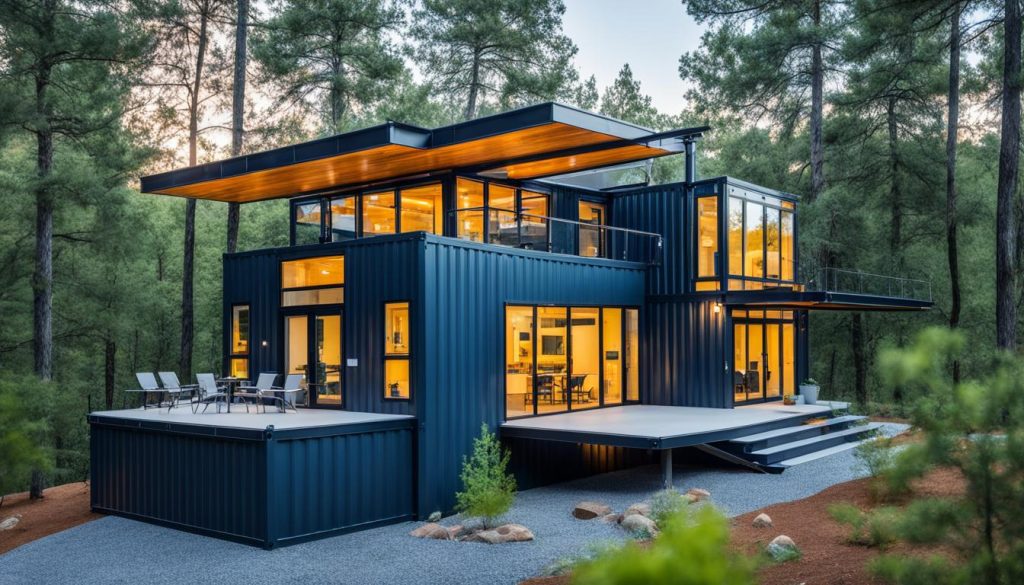
Building your dream home with a container house has many perks. It’s not just cheaper and better for the planet. You can make your living space your own in ways you’ve never thought of before.
Customizable and Modular Design
Choosing a customizable container home means you get to design it just how you want. You can pick from different container sizes like the 20-foot and 40-foot ones. You can even use more than one to make a bigger home.
This way, you can change your home’s size or shape as you need. It’s super flexible. And if you need to move, you can take your container home with you. This is something traditional homes can’t do.
Also, with prefab container housing, you can add your own style to your home. You can choose everything from the layout to the final decorations. This means your home will truly show off your taste.
By going for a container house, you get a home that fits your life and shows off your style. These homes are getting more popular because they’re unique and personal. They offer a way to live that’s both flexible and stylish.
container house build: Step-by-Step Guide
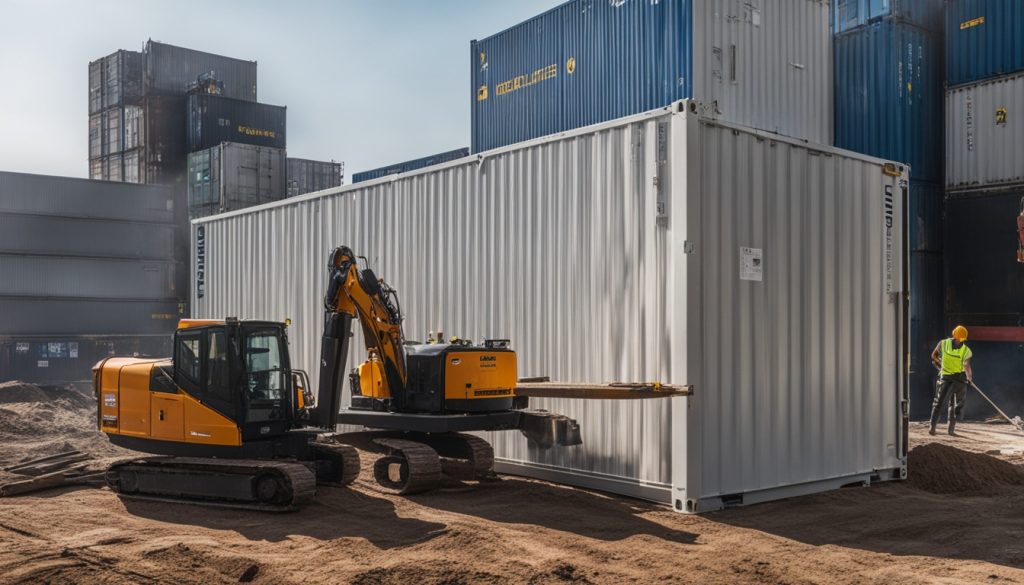
Building a container house is exciting and rewarding. It needs careful planning and execution. First, make sure your project meets local building codes and regulations. This means getting permits and working with local experts to get approval.
Site Preparation and Foundation
After meeting legal requirements, prepare the site for the container. Clear the land, make a stable foundation, and make sure the area is easy to reach for the crane or forklift. The foundation type, like a slab or strip, depends on the site and local codes. A strong foundation and good site prep are key for the container home’s safety and stability.
To make your container house build process a success, follow these steps:
- Get the needed permits and work with local authorities to follow building codes.
- Clear the site, making it level and easy to reach for the container delivery and setup.
- Choose the right foundation type, based on the site and local rules. This could be a slab or strip foundation.
- Plan the container placement and direction to make the most of your shipping container home construction.
- Fix any site issues, like slope, drainage, or access, for a stable and safe container home site preparation.
By taking these steps and working with experts, you can have a smooth and successful container house build process.
Design and Customization
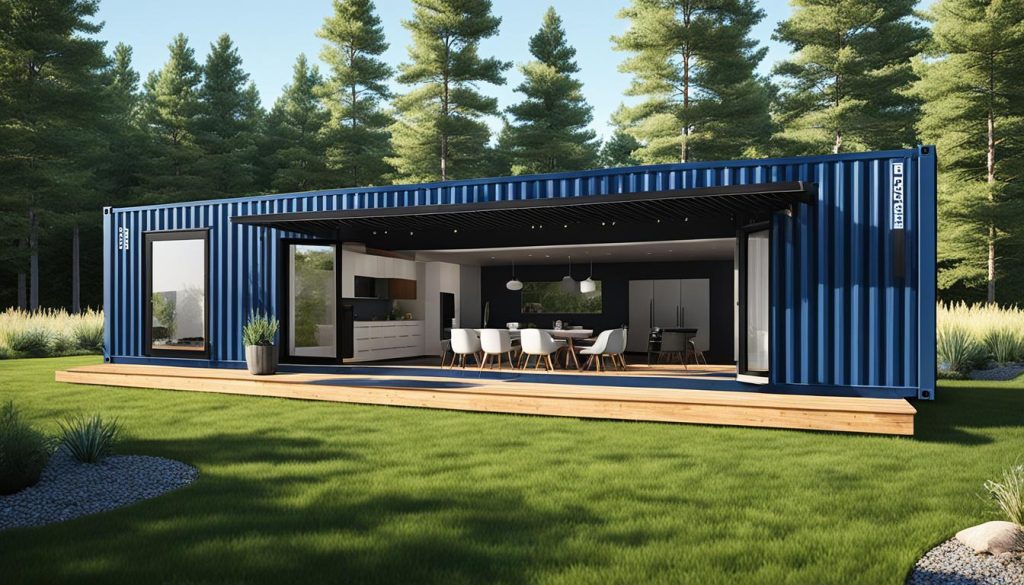
Building a container home lets homeowners show off their creativity. The shipping container is strong, but the inside can be made unique. This turns a simple structure into a special place to live.
Working with architects and designers, homeowners plan the layout and pick materials. They can add windows, doors, and skylights for more light and air. This makes the home welcoming and saves energy.
The inside of a container home can look like many styles, like modern or simple. By thinking about design and customization, homeowners make a home that’s both useful and beautiful. It shows off their personal style.
Customization Options for Container Home Interiors
- Layout and floor plan optimization
- Selection of finishes, materials, and fixtures
- Incorporation of custom storage solutions
- Integration of energy-efficient features
- Addition of architectural elements like windows and skylights
| Design Style | Key Features | Examples |
|---|---|---|
| Contemporary Industrial | Exposed steel, concrete, and natural wood elements | Minimalist furniture, metal accents, open layouts |
| Minimalist and Neutral | Clean lines, light colors, and natural materials | White walls, wooden floors, simple furnishings |
| Personalized and Eclectic | Unique design features, custom built-ins, and vibrant accents | Colorful artwork, custom cabinetry, and personalized decor |
Thinking about design and customization turns a simple shipping container into a dream home. It reflects the homeowner’s style and meets their needs.
Navigating Permits and Regulations
Building a container home is exciting but also complex. You need to look into permits and regulations first. Make sure to check the building codes and get the right permissions for your area. This step is key to making sure your home follows local and state laws.
Building Code Compliance
You must work with local authorities to learn about container home rules. These rules might be different from regular houses. You’ll need permits for the foundation, plumbing, electrical, and more. A general contractor with experience in modular building can help you with permits and make sure your home follows the rules.
It’s very important to pay attention to legal and regulatory needs for a successful container house. If you don’t get the right permits or follow the building codes for container homes, you could face big delays, fines, or even have to change or remove your home.
- Understand local container home permits and regulations
- Secure necessary permits for foundation, plumbing, electrical, and other infrastructure
- Work with experienced general contractors to navigate the permitting process
- Ensure your container home meets all applicable shipping container home regulations
By carefully going through the permitting and regulatory steps, you can make sure your container home project goes well. Your dream home will be built right.
Financing and Budgeting
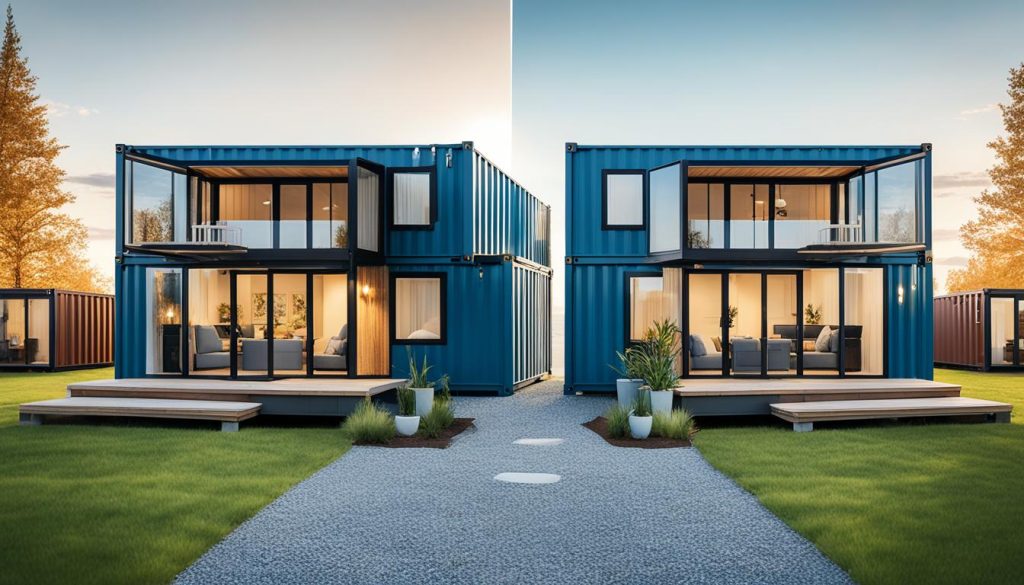
Building a container home can save money and be good for the planet. But, you need to think about financing and budgeting. The cost can change a lot, based on size, how many containers you use, how custom it is, and where it’s located. It’s important to look into financing options and plan well to keep your project affordable.
Navigating the Costs of Container Homes
Prices for a used 40-foot container start at $3,000 and go up to $6,000 for a new one. Adding the cost to move it can add 50-75% more. Things like the foundation, utilities, and finishing touches also affect the price of container home costs.
Here are some costs to think about for your budgeting for container house build:
- Buying a container, new or used
- Getting it to your site
- Preparing the site and building a foundation
- Connecting to utilities like water, electricity, and sewage
- Adding insulation, windows, and doors
- Finishing touches like design, appliances, and more
Looking into financing container homes can make your dream come true. Check out personal loans, home equity lines of credit, or special financing for container homes. With good planning and budgeting, you can make your container home dream real and affordable.
| Cost Factor | Estimated Range |
|---|---|
| Container Acquisition | $3,000 – $6,000 |
| Transportation and Delivery | 50% – 75% of container cost |
| Site Preparation and Foundation | $5,000 – $20,000 |
| Utility Connections | $2,000 – $10,000 |
| Insulation, Windows, and Doors | $5,000 – $15,000 |
| Finishing Touches | $10,000 – $50,000 |
Maintenance and Longevity
Container homes are known for their long life and strength. They are made of Corten steel, which stands up well to the weather. With the right care, a container home can last for many years. As a homeowner, I need to take steps to keep the steel safe and make sure my home lasts.
It’s important to check the container often for rust or damage. Fixing any problems right away is key. Using special paints or sealants can stop rust and keep the container strong. Keeping the inside of the container at a good temperature is also important. This stops condensation and rust.
Protecting the Steel Structure
Looking after my container home means it will last a long time. Container homes are very durable. With the right care, my home will stay strong and be a place of pride for me and my family.

